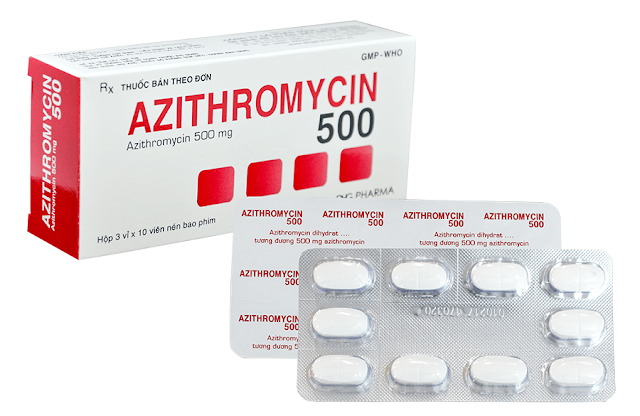Introduction: Azithromycin, a 15-atom lactone macrolide ring compound, is derived from erythromycin by addition of a methylated nitrogen into the lactone ring. Its spectrum of activity, mechanism of action, and clinical uses are similar to those of clarithromycin. Azithromycin is active against M. avium complex and T. gondii. Mycobacteria: Azithromycin is slightly less active than erythromycin and clarithromycin against staphylococci and streptococci and slightly more active against H. influenzae. Azithromycin is highly active against Chlamydia sp. H.influenzae
Pharmacokinetic
aspects of the drug: Azithromycin
differs from erythromycin and clarithromycin mainly in
pharmacokinetic properties. A 500-mg dose of azithromycin produces
relatively low serum concentrations of approximately 0.4 mcg/mL.
However, azithromycin penetrates into most tissues (except
cerebrospinal fluid) and phagocytic cells extremely well, with tissue
concentrations exceeding serum concentrations by 10- to 100-fold.
The drug is slowly released from tissues (tissue half-life of 2–4
days) to produce an elimination half-life approaching 3 days. These
unique properties permit once-daily dosing and shortening of the
duration of treatment in many cases. For example, a single 1-g dose
of azithromycin is as effective as a 7-day course of doxycycline for
chlamydial cervicitis and urethritis.
Pharmacological
Applications: Community-acquired
pneumonia can be treated with azithromycin given as a 500-mg loading
dose, followed by a 250-mg single daily dose for the next 4 days. A
zithromycin is rapidly absorbed and well tolerated orally. It should
be administered 1 hour before or 2 hours after meals. Aluminum and
magnesium antacids do not alter bioavailability but delay absorption
and reduce peak serum concentrations. Azithromycin does not
inactivate cytochrome P450 enzymes and, therefore, is free of the
drug interactions that occur with erythromycin and clarithromycin.
RELATED;
1. The cytochrome P450 enzyme system
2. Pharmacology test questions
3. Pharmacology and therapeutics












No comments:
Post a Comment